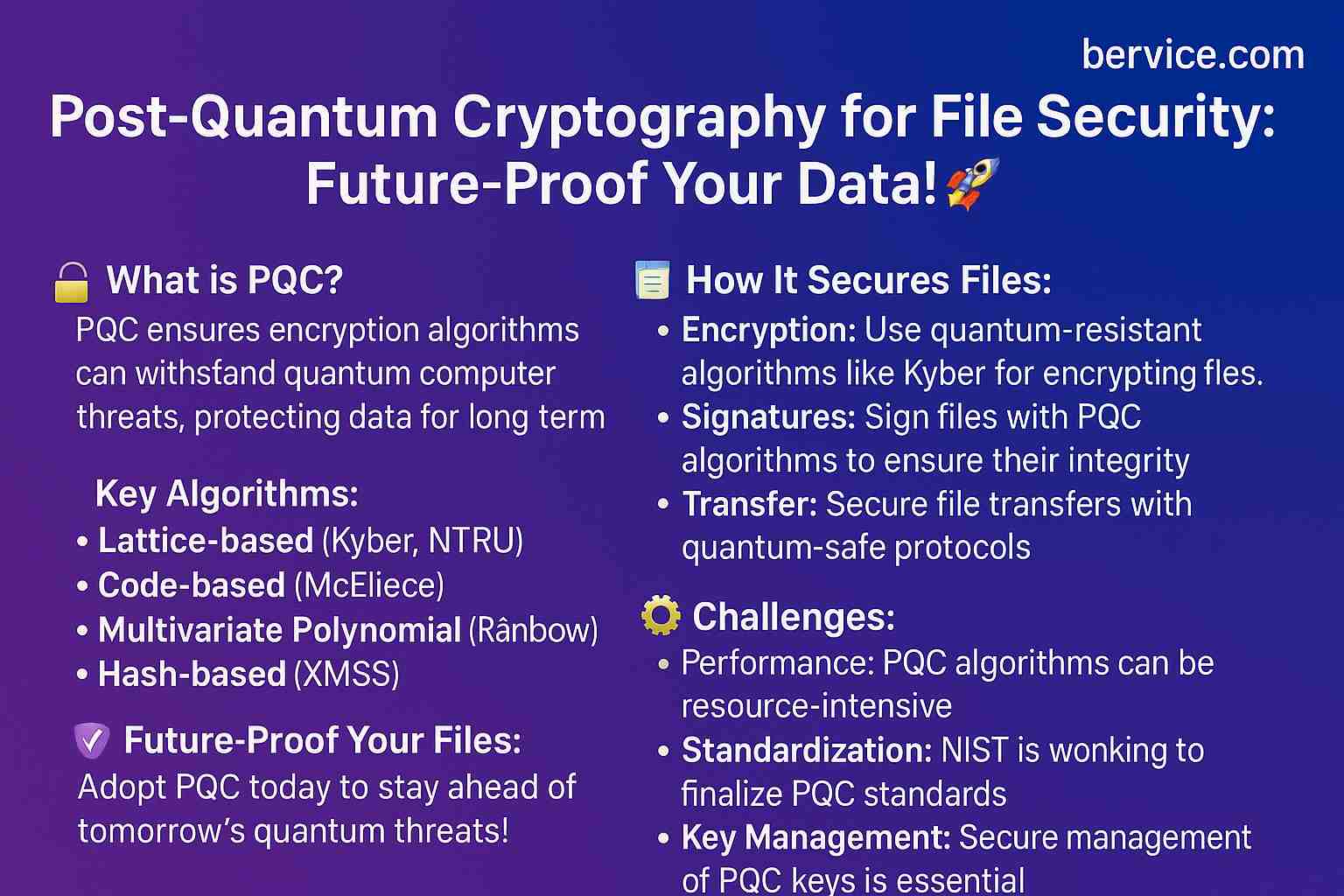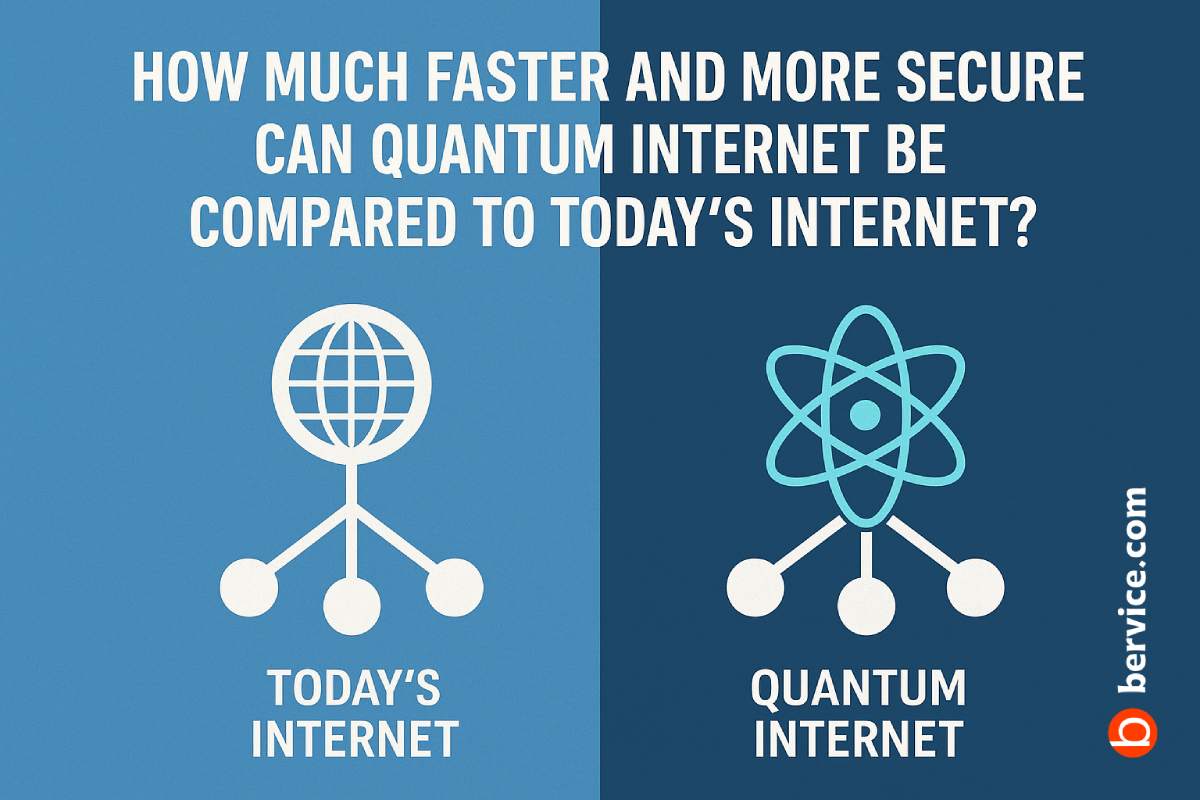
Post-quantum cryptography (PQC) is the field of cryptography focused on developing algorithms that are secure against the potential future threat of quantum computers. Quantum computers have the potential to break widely used encryption algorithms, such as RSA and ECC (Elliptic Curve Cryptography), due to their ability to solve certain problems exponentially faster than classical computers. This concern has led to the development of post-quantum cryptographic algorithms that are resistant to quantum attacks.
In this article, we will explore how post-quantum cryptography can be applied to protect files and data. This will include an overview of the most prominent PQC algorithms, the challenges they address, and their application in securing files.
1. Understanding Quantum Computing and Its Threats to Cryptography
Quantum computers leverage the principles of quantum mechanics to process information in fundamentally different ways from classical computers. They can exploit quantum phenomena like superposition and entanglement to solve certain mathematical problems that are infeasible for classical computers, such as integer factorization (used in RSA) and discrete logarithms (used in ECC).
This poses a threat to existing cryptographic schemes because algorithms like RSA and ECC depend on the difficulty of these problems. Quantum computers could potentially break these encryption schemes by using algorithms like Shor’s algorithm, which can efficiently factor large numbers and compute discrete logarithms.
2. The Need for Post-Quantum Cryptography
With the rise of quantum computing, the need for cryptographic methods that can withstand quantum attacks has become critical. This is where post-quantum cryptography comes in. PQC algorithms are designed to resist attacks from quantum computers, ensuring data protection even in the future.
3. Key Post-Quantum Cryptographic Algorithms
There are several types of post-quantum cryptographic algorithms that have been proposed and are being standardized by organizations like NIST (National Institute of Standards and Technology). Some of the key types include:
- Lattice-based Cryptography: Lattice-based algorithms, such as NTRU and Kyber, rely on the hardness of problems related to high-dimensional lattices. These problems are believed to be difficult for both classical and quantum computers to solve efficiently.
- Code-based Cryptography: Code-based schemes, like McEliece, rely on the difficulty of decoding random linear codes. These algorithms have been studied for decades and are considered quantum-resistant.
- Multivariate Polynomial Cryptography: These algorithms, like Rainbow, are based on the difficulty of solving systems of multivariate polynomials, which is believed to be hard for quantum computers.
- Hash-based Cryptography: Hash-based signatures, such as XMSS (eXtended Merkle Signature Scheme), use the security of cryptographic hash functions to provide quantum-resistant digital signatures.
4. Post-Quantum Encryption for Files
To secure files using post-quantum cryptography, several methods can be implemented:
- File Encryption: Post-quantum encryption algorithms can be applied to encrypt files in such a way that they are secure even in the presence of a quantum computer. This involves using a quantum-resistant encryption algorithm to protect the file contents. For instance, the Kyber encryption scheme can be used for encrypting the file keys, which can then be used for symmetric encryption of the file contents.
- Digital Signatures: Files can be digitally signed using post-quantum digital signature schemes to ensure their authenticity and integrity. Algorithms like XMSS provide a way to sign files in a quantum-resistant manner, ensuring that unauthorized modifications are detectable.
- Secure File Transfer: Post-quantum cryptography can be employed in secure file transfer protocols (e.g., HTTPS, SSH, SFTP) to protect the confidentiality and integrity of files during transmission. Quantum-resistant public key exchange protocols, such as those based on lattice-based or code-based algorithms, can be used to ensure secure communication.
5. Challenges and Future of Post-Quantum Cryptography
While post-quantum cryptography holds the promise of securing data in a quantum world, there are still challenges to overcome:
- Performance: Many post-quantum algorithms are more computationally intensive than classical algorithms, which can make them less efficient. This is especially important for file encryption, as large files may require more resources to encrypt and decrypt.
- Standardization and Adoption: The standardization process for post-quantum cryptographic algorithms is still ongoing. As of now, NIST is in the process of selecting and standardizing algorithms for public use. Widespread adoption will require significant changes to existing systems and infrastructure.
- Key Management: As with any encryption scheme, key management is a crucial aspect of maintaining file security. The secure generation, distribution, and storage of post-quantum keys will be essential in ensuring the long-term security of encrypted files.
6. Conclusion
Post-quantum cryptography is an emerging field that addresses the growing threat of quantum computers to existing cryptographic schemes. By implementing quantum-resistant algorithms for file encryption, digital signatures, and secure transfer protocols, organizations can ensure the confidentiality, integrity, and authenticity of their files in a quantum-safe future. As the field continues to evolve, it is essential for businesses and individuals to stay informed and prepare their systems for the post-quantum era.
By adopting post-quantum cryptography for file protection, we can future-proof our data security against the inevitable rise of quantum computing.
Connect with us : https://linktr.ee/bervice





